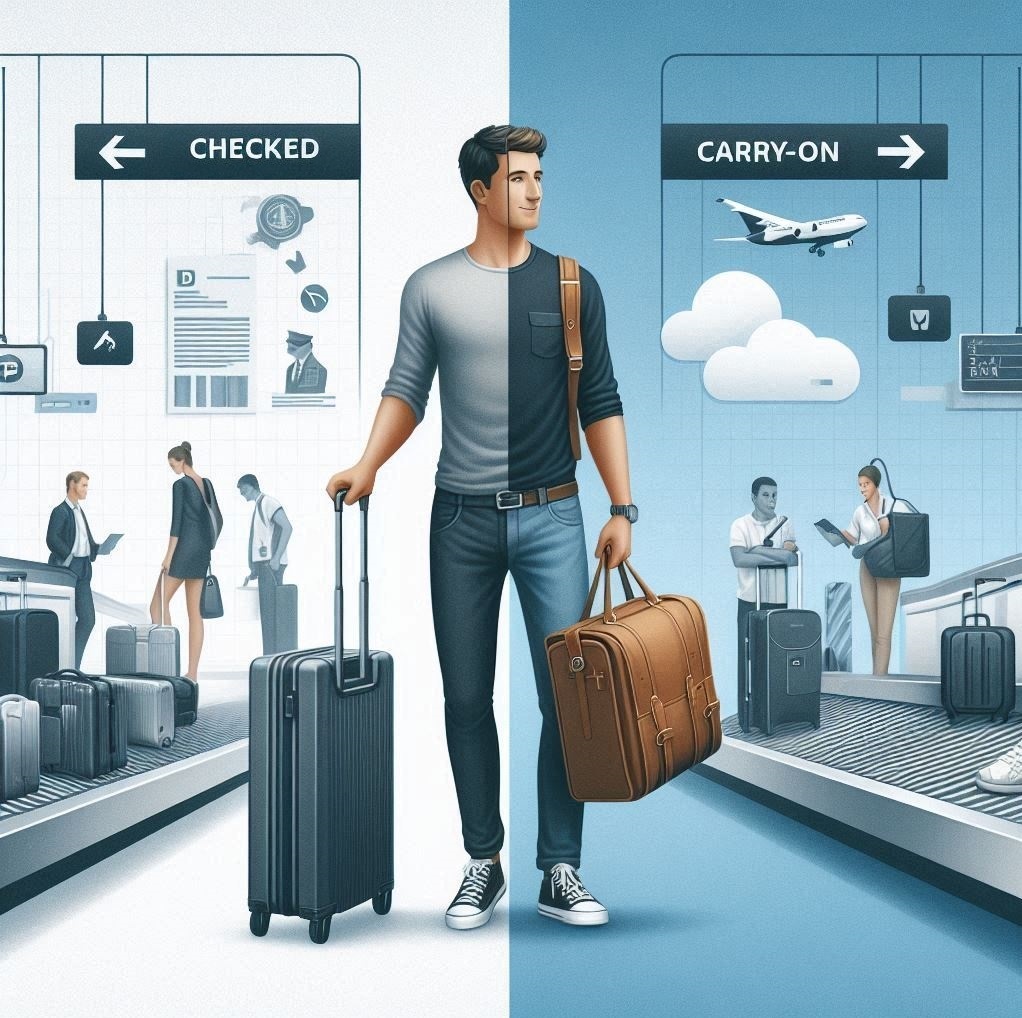Carry-On vs. Checked Luggage What Should You Pack
Carry-On vs. Checked Luggage – What Should You Pack?
When preparing for air travel, one of the biggest dilemmas is deciding between carry-on and checked luggage. Should you travel light and stick to a carry-on, or do you need the extra space a checked bag provides? Knowing what to pack in each type of luggage can save you time, money, and stress. In this guide, we will explore the differences between carry-on and checked luggage, what to pack in each, and essential air travel tips to make your journey smoother.
Understanding Carry-On vs. Checked Luggage
Carry-On Luggage
Carry-on luggage refers to the bags you bring with you onto the plane. Most airlines allow passengers to bring one carry-on bag and one personal item, such as a backpack, purse, or laptop bag. The size and weight restrictions for carry-on luggage vary by airline, so it’s essential to check your airline’s specific policies before packing.
Pros of Carry-On Luggage:
- No baggage fees (on most airlines)
- Faster airport experience (no need to check or claim luggage)
- Reduced risk of lost or delayed baggage
- Easier access to essentials during the flight
Cons of Carry-On Luggage:
- Limited space for packing
- Restrictions on liquid sizes (3-1-1 rule)
- May need to fit under the seat or in overhead bins
Checked Luggage
Checked luggage is larger baggage that is stored in the cargo hold of the airplane. These bags must be dropped off at the check-in counter and retrieved at the baggage claim upon arrival. Airlines typically have weight limits for checked bags (usually 50 lbs or 23 kg) and may charge fees depending on the fare class and airline policy.
Pros of Checked Luggage:
- More packing space for longer trips
- No restrictions on liquid sizes
- Ability to pack bulkier or heavier items
Cons of Checked Luggage:
- Additional fees may apply
- Risk of lost, delayed, or damaged luggage
- Longer wait times at baggage claim
What to Pack in Your Carry-On Bag
Packing your carry-on properly is crucial for a smooth flight experience. Since carry-on bags are always with you, they should contain essential items for convenience and emergencies.
Essential Items for Your Carry-On:
- Travel Documents: Passport, boarding pass, ID, visas, and any necessary travel paperwork should always be in your personal item.
- Valuables: Items like cash, credit cards, jewelry, and expensive electronics should never be checked.
- Medications: Pack all necessary prescription and over-the-counter medications in your carry-on to avoid potential delays or loss.
- Toiletries: Follow the TSA’s 3-1-1 rule for liquids (3.4 ounces or 100ml per container, all fitting in a 1-quart clear plastic bag). Bring travel-sized essentials like toothpaste, deodorant, and hand sanitizer.
- Electronics & Chargers: Keep your phone, laptop, tablet, and power banks in your carry-on for easy access during the flight.
- Change of Clothes: In case of lost luggage, having a fresh set of clothes can be a lifesaver.
- Snacks & Water Bottle: Bringing non-perishable snacks like granola bars or nuts can help keep hunger at bay. A reusable water bottle can be filled after security to stay hydrated.
- Entertainment: Books, magazines, headphones, or downloaded movies can make long flights more enjoyable.
What to Pack in Your Checked Luggage
For longer trips, your checked luggage will hold the majority of your belongings. Since these bags are stored in the cargo hold, pack accordingly.
Items Best Suited for Checked Luggage:
- Bulkier Clothing & Shoes: Pack heavier jackets, boots, or extra pairs of shoes in your checked bag to save space in your carry-on.
- Full-Size Toiletries: Unlike carry-ons, checked bags allow you to bring full-sized bottles of shampoo, conditioner, and other liquids.
- Extra Outfits: For extended trips, pack multiple outfits, keeping in mind weather conditions and planned activities.
- Sports & Specialty Equipment: Items like hiking gear, snorkeling sets, or ski equipment often need to be checked.
- Prohibited Carry-On Items: Sharp objects, large liquid containers, and other restricted items should be placed in checked luggage if necessary.
- Souvenirs & Gifts: If you’re bringing home large souvenirs, it’s best to store them safely in your checked bag.
Packing Tips for Efficient Travel
Whether you’re traveling with only a carry-on or checking a bag, smart packing techniques can help maximize space and minimize hassle.
- Use Packing Cubes
Packing cubes help organize your clothing, making it easier to find what you need while keeping your suitcase neat.
- Roll Your Clothes
Rolling clothes instead of folding them can save space and prevent wrinkles.
- Pack Dual-Purpose Items
Choose versatile clothing that can be mixed and matched for different outfits to reduce the number of items you need.
- Follow Airline Baggage Policies
Always check your airline’s baggage restrictions to avoid extra fees or issues at the airport.
- Weigh Your Luggage Before Leaving Home
A luggage scale can help ensure your checked bag meets airline weight limits, avoiding surprise charges.
- Use Luggage with Built-in Locks
TSA-approved locks can add an extra layer of security to your belongings.
Final Thoughts: Which Option is Best for You?
Choosing between carry-on and checked luggage depends on the length of your trip, airline policies, and personal preferences. If you’re on a short trip or want to save money on baggage fees, a carry-on is the best choice. For longer trips or if you need extra space, checked luggage may be necessary.
By following these air travel tips and knowing what to pack in each type of luggage, you can enjoy a stress-free and organized journey. Whether you travel light or pack everything you might need, planning ahead will ensure a smooth trip from start to finish.
Have a favorite packing strategy? Share your thoughts in the comments below!




